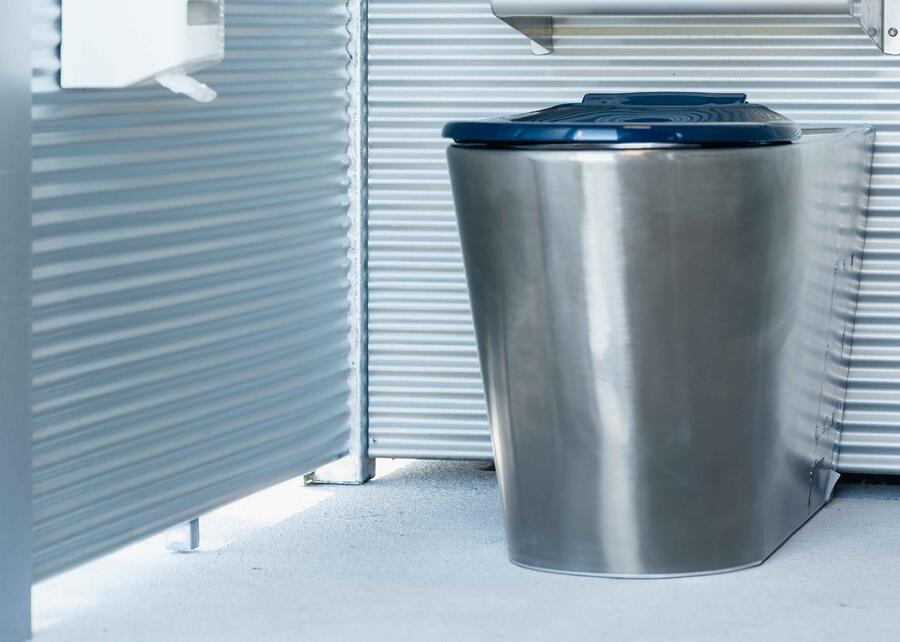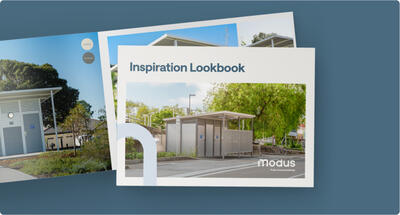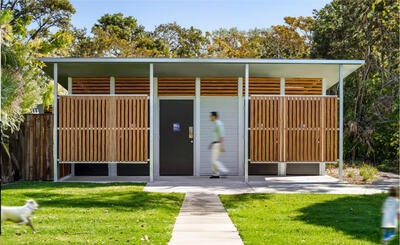Future-proof assets with flood-resilient toilet design
22 July 2024
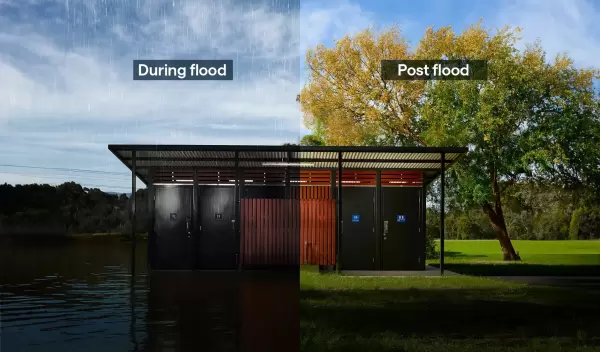
Managing toilet building projects is an inherently complex task for local government. But, when you’re building in a flood prone area, things become much more challenging.
The reality is that flood vulnerability is not a niche issue.
National Flood Insurance Database (NFID) data reveals that there are 220,000 residential and commercial addresses located within the 100?year Average Recurrence Interval (ARI) flood zone with a 1% Annual Exceedance Probability (AEP). For those addresses, a flood event has a one percent chance of occurring in any given year. In these flood-prone areas, buildings must be designed to not only survive flooding, but to be able to quickly recover from flooding. This adds another critical dimension to their planning and construction efforts.
Part of that is because a complete rebuild is a significant expense. But out-of-service, flood-damaged toilet buildings are also a major community disruption; in a time of crisis these facilities are often desperately needed by locals.
Being able to use a toilet in public — and to feel safe and secure while doing so — should be a basic human right. Every year we receive many enquiries from councils forced to completely replace toilet buildings that were unable to survive a flooding event. Reconstruction can take many months and the financial cost can sometimes run into hundreds of thousands of dollars. So, what should smart councils be doing?
Our recommendation is building in flood-resilience. To be clear, flood-resilient strategies won’t stop flooding. However, they do mitigate damage. You’re not forced into a complete rebuild, saving you money. Plus, the post-flood clean-up is quicker, so your facilities get back in service faster.
Here’s the process that we typically suggest to councils who work with us.
Action 1: Determine if your location is flood-prone
Before planning a flood-resistant toilet building project (or any project, even), the first step is seeing whether your community is flood prone. What should you look at?
1. Historical data.
Local government and environmental agencies keep historical flood records. Reviewing these can provide insights into the vulnerability of a site.
2. Floodplain mapping tools.
Government agencies also make Floodplain Mapping Tools available that reveal floodplain details, flood levels and floodplain development strategies. (Here’s the one for Western Australia, for example: Floodplain mapping tool)
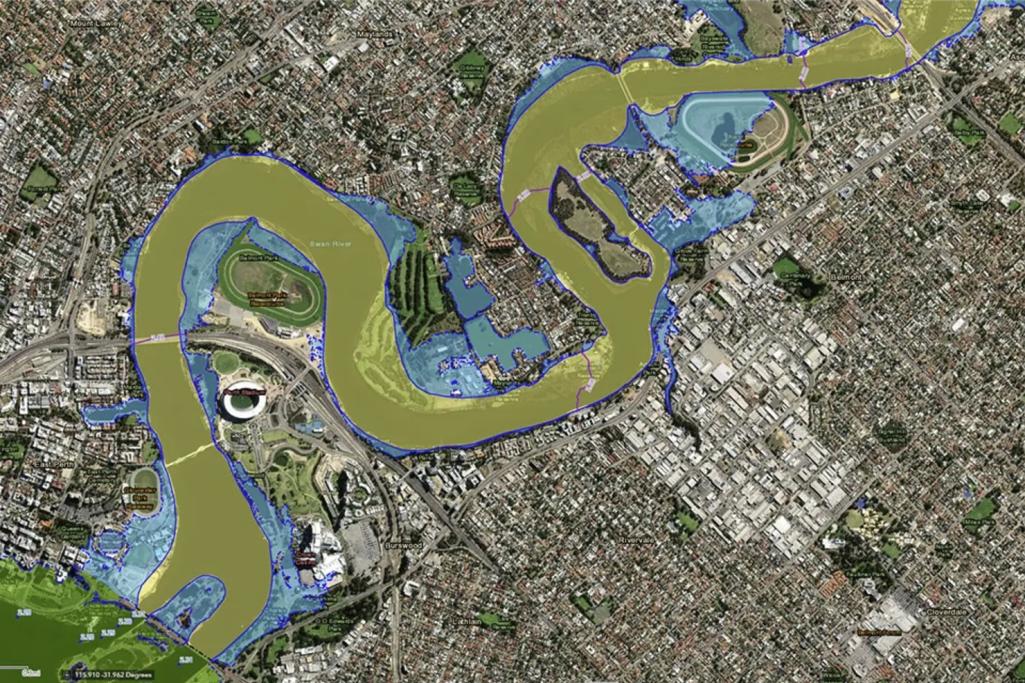
The floodplain mapping shown is the defined flood event for land-use planning. In most cases this is the 1 in 100 (or 1%) annual exceedance probability (AEP) flood event. This was previously known as the 100-year annual recurrence interval (ARI) event — a statistical measure used to estimate the likelihood of a flood occurring in any given year.
Commonly used ARIs in Australia are the 20-year, 50-year, and 100-year flood levels, which correspond to floods that have a 5%, 2%, and 1% chance of occurring in any given year, respectively.
Minor Flooding:
Generally starts affecting low-lying areas and minor roads, often corresponding to events less severe than a 20-year ARI.
Moderate Flooding:
Affects more substantial areas, possibly disrupting transport and some buildings. This is typically around the 20-year to 50-year ARI level.
Major Flooding:
Involves extensive inundation, affecting homes and businesses, typically corresponding to floods above the 50-year or 100-year ARI.
That all said, it is always good to consider flood-resistant toilet facility solutions since so many Australian locales are vulnerable to different natural disasters that can cause water damage, whether it’s tropical cyclones, extreme thunderstorms, monsoon lows or storm tidal surges.
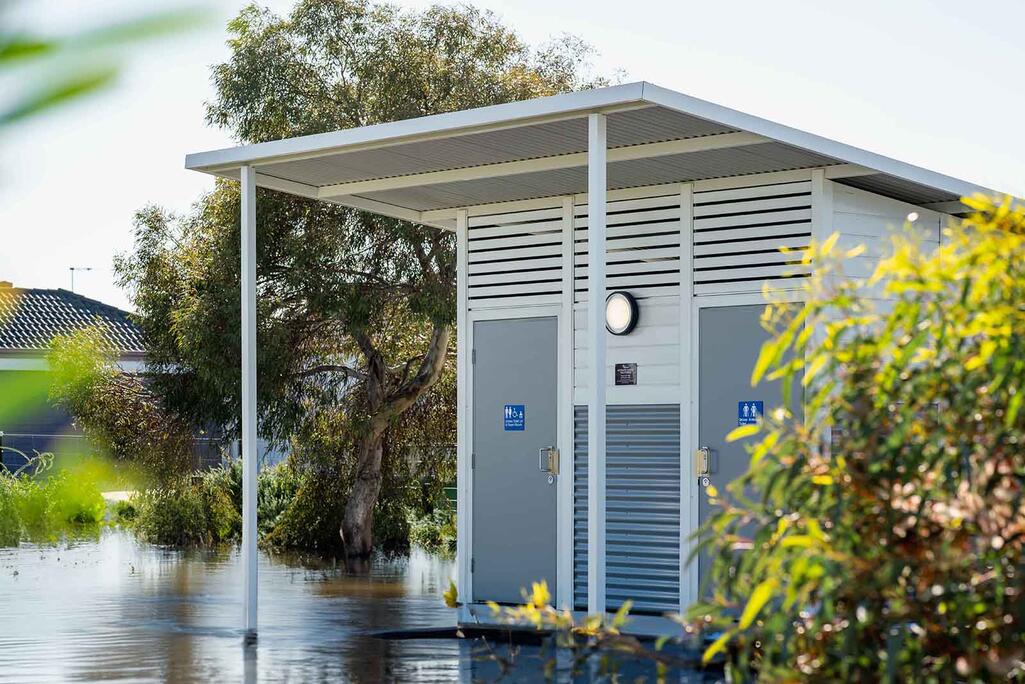
Action 2: Undertake Flood Flow preparation
As floodwaters rise, buildings closer to river (or sea) level are naturally affected first. Those with a higher elevation than surrounding terrain and waterways may escape with little or no damage. You want water flowing away from your facility, not pooling around it.
This simple fact is why raising floor height is one of the most effective ways to protect against flood damage.
We recommend that designers raise the door panels of flood-prone buildings based on the provided flow rates. However, as a rule, that is usually around 30mm from ground level.
Action 3: Use water-resistant materials
Wherever possible, designers should aim to specify non-porous building materials and fixtures. They don’t absorb water and that prevents moisture penetration that renders materials such as gyprock and plasterboard useless when inundated.
This simple fact is why raising floor height is one of the most effective ways to protect against flood damage.
Epoxy floors are an especially durable surface highly resistant to water, stains, and other contaminants.
As a result, it’s an excellent choice for areas that require easy maintenance and robust protection against moisture. Plus, they provide no purchase for the growth of bacteria or mould — both common post-flood problems.
Standard concrete flooring is naturally resistant to water absorption. Its durability can be further enhanced with sealants that strengthen its waterproofing. While not as impervious as epoxy, properly treated concrete can be a cost-effective and resilient option for flood-prone areas, offering good durability and ease of cleaning.
For fixtures, designers should consider those made from durable, high-quality stainless steel. It is inherently resistant to rust and degradation even after prolonged exposure to water. It’s also just tough — offering great durability against general wear and tear.
Elevate all your electrical systems and install electrical outlets, switches, and wiring at higher levels to give them the best chance of staying above the flood. Taking the option of getting them waterproofed against moisture intrusion can also be a very prudent option.
Action 4: Implement a sewage safeguard system
When you’re discussing toilets, you're inevitably going to have to wade into the less glamorous side of things: sewage. Point is: it’s essential to ensure that what goes down the pipes stays down there. You don’t want unwelcome backflow during a flooding event.
For this reason, designers should consider investing in a sewage safeguard system, designed with barriers and backflow prevention devices that prevent floodwaters from entering sewage lines.
This helps keep sewage contained even as surrounding waters rise, preventing backflow you’re your facility and then out into the surrounding community.
Action 5: Use prefab modular construction
A prefabricated modular system of construction is extremely effective for rapid, simple assembly. But one overlooked feature that is beneficial during floods is the ability to perform quick, individual panel replacement.
This means that if a flood damages panels or sections of your facility (i.e.: they’re struck by fast-moving debris such as trees), these can be individually replaced.
This significantly reduces the time and cost associated with post-flood recovery and ensures that buildings can be restored to full functionality with the least amount of service minimal disruption.
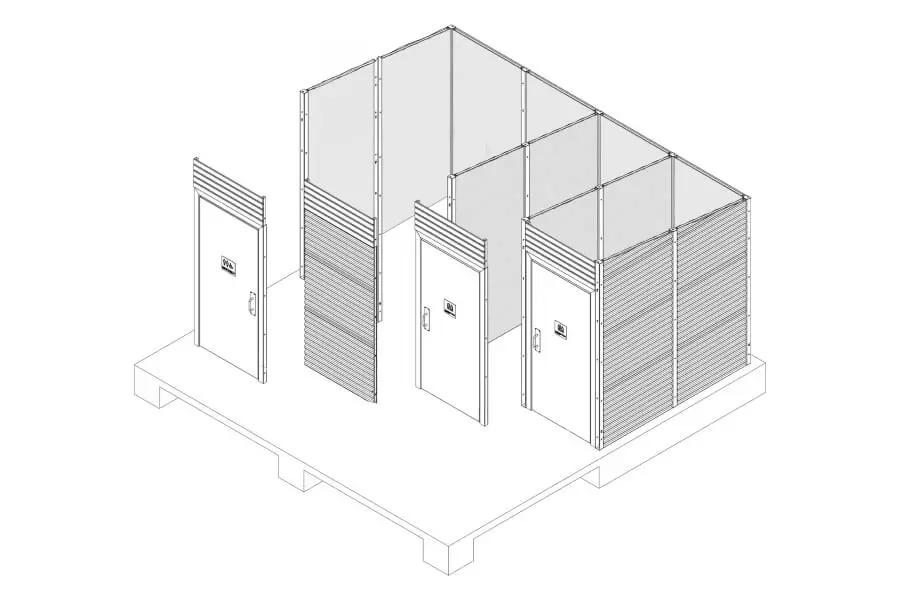
Exploring your options
By proactively offering flood resilient solutions you can ensure that communities are better prepared to handle the challenges of flooding, reducing both immediate and long-term impacts on infrastructure and residents.
Things like floor materials, wall materials, construction systems, raised panels along with mode of delivery can all improve flood resiliency.
Moreover, they can help address a spectrum of other requirements such as vandalism resistance, aesthetics, and long-term durability and AS1428 accessibility — without compromising regulatory compliance.
While these suggestions offer a foundation for action, it’s crucial to recognise that each project is distinct. Our approach draws on a thorough understanding of the local area, taking into consideration factors such as flood levels community infrastructure requirements
If you’re unsure about the best way forward for your, potentially, flood-affected toilet block, call us for a design consult on 1300 945 930 or book a project consultation below.
Download our guide & checklist to flood resilient toilet buildings
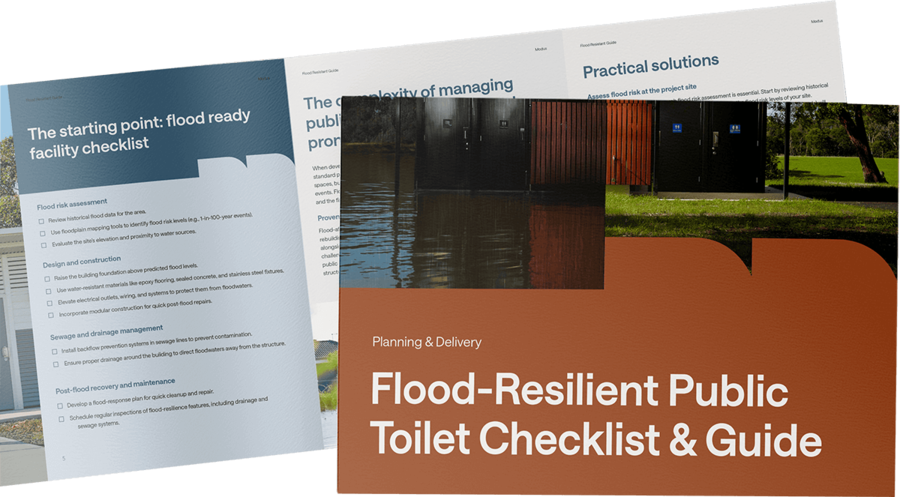
View Inspiration Lookbook
